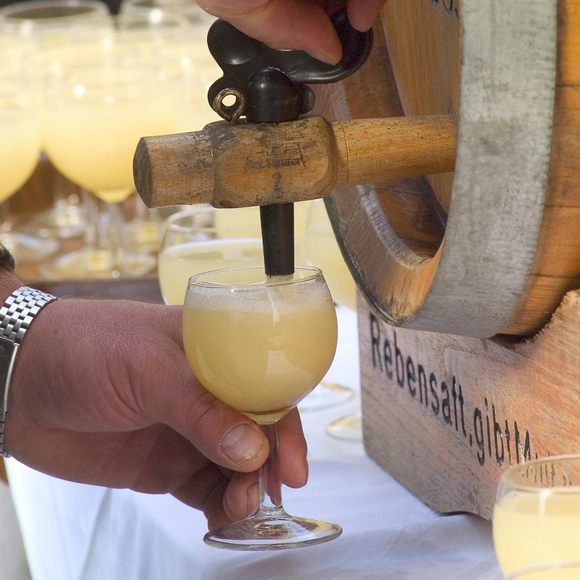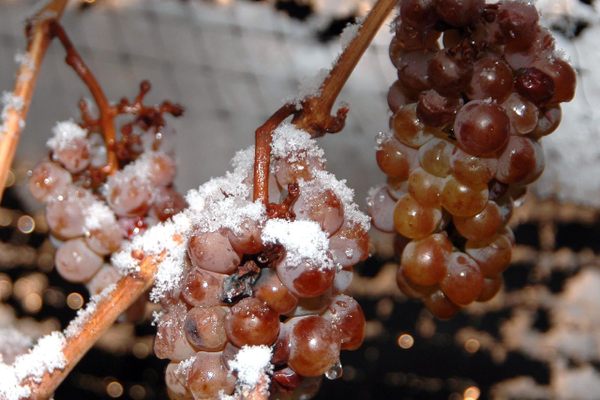Drinks
Sturm
Fizzy, fruity, and still fermenting, this almost-wine is a celebrated part of Austria's harvest season.
From late September through early October, a dubious-looking drink is popular in Austria. Called sturm, it’s usually poured into a pint glass, tumbler, or large wine glass and has the look of hazy, unfiltered beer. But sturm is actually fermenting grape juice, still on its way to becoming wine, and it’s Austria’s favorite way to celebrate the harvest season.
Usually in winemaking, every part of the process is deliberate and sometimes even a little slow. The fermentation is controlled, done at just the right temperature that the winemaker chooses to bring out exactly the flavors she wants. Wines are aged in tanks or barrels, and all the little bits of grape skin and yeast that are in the grape juice as it ferments settle to the bottom. As the wine is poured into different containers (called racking), it’s poured off this sediment, getting it closer to the clear red, white, or pink beverage we think of when we think of wine.
But wine-producing regions succumb to a little bit of euphoria during harvest season, leading to bacchanal-like behavior and drinks like sturm, where still-fermenting juice is drunk in quantities large enough that it sometimes leads to singing.
The best place to sample sturm is at a typically Austrian-style restaurant called a heuriger. Heurigen are sort of like the wine version of brewpubs. They are small, family-owned wineries that have a restaurant attached to them, so the wine you drink with your meal was made on the premises. They are casual, homey places, and some of them even have buffets instead of regular table service. Sometimes you can even watch wine being made while you eat if your table is outside and you’re at the right angle.
If you’re already in Vienna during sturm season, Döbling, Vienna’s 19th district, is home to the densest concentration of heurigen so you can sample a few different types of sturm and see which you like the best. Some are made with red grapes, although most is made with white, and some are sweeter than others. They all share a fresh, juicy, slightly fizzy quality, and are definitely meant more for gulping than pondering, swirling and sniffing.
Where to Try It
-
Silberwirt
Schlossgasse 21, Vienna, AustriaThis traditional restaurant serves sturm in autumn.












